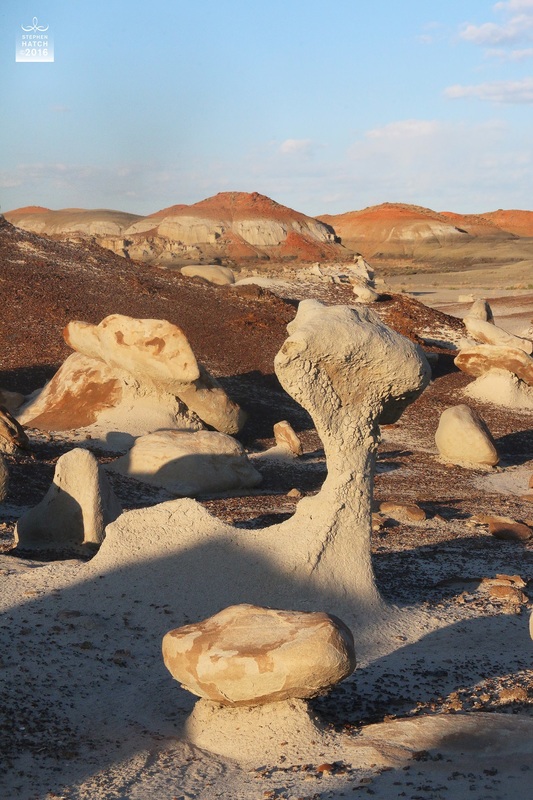|
Last Saturday morning, I sat at the edge of our Ghost Ranch campsite meditating and reading a new book by Matthew Fox on Thomas Merton. In a chapter detailing the necessity of exercising creativity (the via creativa) for a vibrant spiritual journey, Fox quotes a book by G.B. Mohan which makes the following statement: "By pointing out unsuspected affinities between apparently dissimilar things, by establishing meaningful relations between apparently unrelated phenomena, poetry extends the range of our awareness." Fox then goes on to write: "For me the very meaning of being an intellectual is about being creative with ideas; it is about mixing and matching ideas and birthing a third thing from such marriages." I found myself excited to read these passages, for they brought me back to a time when I taught regularly on the process by which poetry becomes the actual space where opposites are able to join together. In a manuscript entitled "Ravished by Wild Beauty" written in 1998, for example, I quoted Muskogee poet Joy Harjo: "In my poem 'She Had Some Horses,' the loved and hated are joined, are the same. Maybe that's not true, but in the poem it's true. The poem says 'She had some horses she loved / She had some horses she hated / These were the same horses.' Yes, my poetry is a way to bring together the paradoxes in the world. For me, poetry is a bridge over the sea of paradox." In the same manuscript, I noted how John Elder reminds us that it is the act of verbally "walking back and forth" between the various images in a poem that does the work of uniting. This happens not just within a poem but in the act of LIVING poetically. For example, while cleaning offices at night, I make a practice of repeating a mantra that joins together the mundane nature of the janitorial work with a beautiful landscape of the desert or mountains. For this purpose, I often I use phrases from the writings of John Muir or Edward Abbey. Looking up from my book that day, I noticed how the cliffs looming in front of me seemed like the soft, sentient body of the Earth, even though they were also composed of hard rock. Then, later the next day, my wife and I drove to Bisti De-Na-Zin Badlands in Navajo country to the west, where a seemingly endless variety of eroded hoodoo forms BEG poetic interpretation. We live in a strange era, when many people seem to have lost touch with the beneficial unifying capabilities of myth, metaphor and poetry. Many simply don't want to do the work of thinking symbolically. Instead, they appear to operate out of a literalistic view of life, and seem to be all the more devoid of spiritual meaning because of it. I pray that we as a people might return to the way of symbol, archetype, myth and metaphor, and so learn to poetically stitch together the disparate elements of life into a single unifying Whole. Photos: The first photo is from Ghost Ranch. The other three were taken at Bisti De-Na-Zin Badlands, NM, May 30, 2016. For Spiritual Direction or Workshops, please visit: http://www.resourcesforspiritualgrowth.com/
0 Comments
Leave a Reply. |
AuthorStephen Hatch, M.A. is a spiritual teacher and photographer from Fort Collins, Colorado. His approach is contemplative, inter-spiritual, and Earth-based. Archives
June 2016
Categories |




 RSS Feed
RSS Feed
